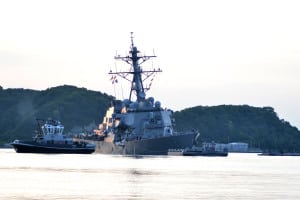
The Navy formally established the Commander, Naval Surface Group Western Pacific (CNSG WP) in Japan to oversee surface ship maintenance and certification of forward deployed naval forces in Japan (FDNF-J), the service said on Tuesday.CNSG WP succeeds the interim Detachment, Naval Surface Group Western Pacific, established last October. It was meant to help balance maintenance, training requirements, and operations but has now become an official permanent command as of April 11.Adm. Scott Swift, former commander of the U.S. Pacific Fleet…

 By
By 











